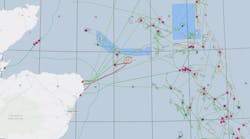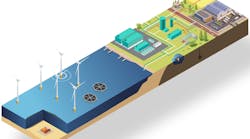Tracy Dulle,
Technology Editor
Surface Systems & Vessels
HOUSTON -- Offshore arctic conditions pose unique design challenges to the safe operation of subsea pipelines, according to Benjamin Eisler of INTEC Engineering. Eisler spoke to an audience at the 20th Deep Offshore Technology conference and exhibition in Houston on Thursday, Feb. 14.
The pipeline route may be exposed to seabed ice gouging and permafrost thaw settlement, Eisler said. If the pipeline route is located near the mouth of a river, it may become exposed due to erosion of the seabed from springtime river overflood draining through holes in the ice sheet (strudel scours) or river channel flows. In some areas, the seabed may have migrating bedforms or the pipeline may be subject to upheaval buckling. These arctic conditions can apply significant loads on a subsea pipeline or leave it exposed above the seabed to other applied loads, he said.
One solution is to use a distributed fiber optic temperature sensing system that can allow the operator to monitor the condition of a pipeline and locate potential erosion events, especially for a buried subsea pipeline operating at warmer temperatures than arctic river water and seawater temperatures, Eisler said. Seabed erosion and possible exposure of a pipeline may be detected and located through changes in the fiber optic cable temperature when the cable is installed in close proximity to a buried pipeline.
The system can also be used as a secondary means to monitor and locate potential leaks, for flow assurance data gathering, communications, permafrost thaw settlement monitoring, and potential pipe strain and vibration monitoring.
"Fiber optic temperature sensing is an achievable and cost effective way to provide real-time integrity information," Eisler said.
02/14/2008




